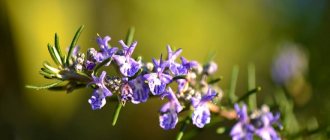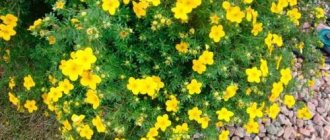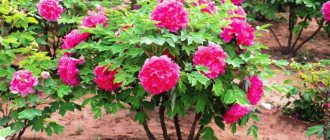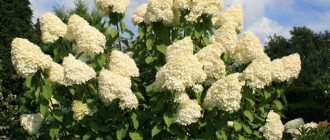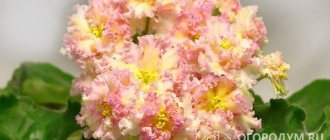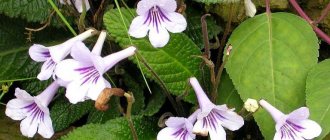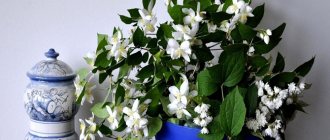One of the most unpretentious and frequently used objects in landscaping is petunia. Landscape designers often use petunia in decoration and create beautiful and at the same time quite durable compositions. These delicate plants were noticed and appreciated back in the 19th century, and then breeders developed several varieties of ornamental petunias. There are still many new hybrids emerging, with larger buds, longer stems and other improved characteristics.
We’ll tell you more about the benefits of landscaping and which varieties of petunia you should choose in this article!
The best varieties of petunia: the history of selection of the best varieties and hybrids of petunia
I started growing annual flowers in the garden and on the balcony more than 20 years ago, but I will never forget my first petunia, which I planted in the country along the path. Only a couple of decades have passed, but you’re amazed at how different the petunias of the past are from the many-sided hybrids of today! In this article, I propose to trace the history of the transformation of this popular flower from a simpleton into a real queen of annuals, and also consider the best modern varieties of petunia .
The best varieties of petunia: history of selection.
History of petunias: from ancestors to modern hybrids
Like many flower growers, I clearly remember that in the recent past, petunias had a characteristic “gramophone” shape of mauve tones, a strong aroma similar to the smell of fragrant tobacco, slightly sticky foliage and erect stems more than 40 centimeters high.
The most intensive selection of petunias was carried out in the West.
And Soviet flower beds and gardens were mainly decorated with petunias, outwardly close to those grown in European gardens and parks back in the 19th century. In appearance, such varieties had much in common with their wild ancestors - white petunia (Petunia axillaris) and purple petunia (Petunia violacea). How not to get confused in the varieties of petunias and choose the right one: (read more)
It is from these two natural species growing in South America that all the best varieties of petunias originate. By the way, petunia violacea was distinguished by small purple flowers, while petunia entireifolia had large white flowers.
Since petunia has not one, but several wild ancestors, the scientific name of this garden flower is “hybrid petunia”. In this regard, even if you purchase seeds of a variety and not a hybrid (F1), on the back of the bag of seeds there will in any case be the Latin inscription petunia hybrida (hybrid petunia).
Moreover, a study of the genome showed that modern petunia has most of the genes from white petunia, 10% from purple petunia, and the remaining 10% is a mosaic interweaving of genes.
It's hard to imagine, but cultivated hybrid petunia is over 200 years old. In the early 1800s, wild species of petunias were brought to Europe, where serious breeding work began on them. As a result of the efforts of breeders in Germany and Britain, specimens with larger flowers than wild species and intense flowering were obtained. However, the shape of the inflorescence and the color of the flowers still remained similar to the wild species: white, purple and, resulting from crossing, shades of lilac, pink and purple.
Interestingly, wild purple petunia attracted mainly bees as pollinators. The white one specialized in nocturnal insects, such as hawk moths and others.
By the way, a flower in the form of a gramophone ideally corresponds to the anatomical structure of butterflies, whose long proboscis can penetrate deep for nectar, and the strong smell of flowers, intensifying at night, is an additional lure for pollinators. But breeders, of course, were not focused on insects, but on improving the decorative qualities of plants. Therefore, modern hybrids have flowers with a wider throat and a relatively short tube.
Unfortunately, as a result of selection, petunia has partially lost its unique aroma, and many modern hybrids have no smell at all. I remember well how in the evenings flocks of hawkmoths circled near my first petunias, and you can rarely see butterflies and bees next to today’s petunias. However, it is thanks to hybridization that today we have a rich variety of all kinds of shades.
Until the 50s of the 20th century, all varieties of petunias were presented in only three colors: white, purple and shades of pink. Today's garden petunia has an almost complete color palette, and we have the opportunity to grow flowers in literally every shade of the rainbow. The only colors that breeders have not yet achieved are true blue and sky blue.
Note! The closer the color of the flower is to its natural appearance, the more hardy the plants are, even if they are united by the same variety series. According to Western researchers, petunias with red and yellow colors are genetically weaker.
According to my personal observations, the purple colors of various lines (Easy Wave, Explorer, etc.) are more stable and hardy, bush more strongly and bloom more profusely in comparison with other flowers of the same series.
Ampel petunia Picobella Red.
Care
Caring for this flower is not difficult, and if you follow all the rules, then all summer and part of the fall you can enjoy incredibly abundant continuous flowering, for which mini petunia is valued.
The soil
The soil that is perfect for this crop is soil for petunias and surfinias. You can prepare the soil mixture yourself. The main conditions: soil permeability, neutral or slightly acidic reaction with a pH of at least 5-5.5 and saturation with organic substances.
Ingredients from which you can independently create the ideal mixture for growth:
- 1 part leaf soil;
- 1 part turf soil or rotted compost;
- 1 part humus;
- 1 part sand;
- 1 part peat.
To make the soil permeable, you can add river sand or perlite. All ingredients must be thoroughly mixed and poured with a weak solution of potassium permanganate or fungicide, such as Boxwood, Falcon, Imolt.
Place
You can grow mini petunia outdoors. If it grows in a flower bed or flower garden, then you can place it in the open sun, since the root system, developing in conditions not limited to a pot, is more resistant to drying out. It is better to place flowerpots or garden boxes in such a way that in the morning and evening the rays fall on the bush, and at noon it remains shaded.
Full shade is not suitable for this flower, since in such conditions the buds will form slowly and the flowering will not be lush.
Watering
Compared to surfinia, mini petunia is not so demanding on watering. If she remains without watering for 3-5 days, this will not negatively affect her condition. But if you want to get active flowering, then watering must be regular.
When watering, you need to pour water so that it does not splash on the flowers, because they will wither faster from the drops.
When the bush stands in an open area all day (on a south balcony or on the south side of the yard), it may need to be moistened twice a day: in the morning and after sunset. If you spray the bush additionally, the effect will be excellent. It is important that the spray bottle is fine and sprays the water to a mist.
Water for irrigation should not be cold and settled. Ideally, rainwater is used. Stagnation of moisture in the pan can cause death of the root system, so excess water after watering must be poured out immediately.
Feeding
One of the main conditions for the high decorativeness of mini petunias is periodic application of fertilizers. This can be done in two equivalent ways:
- 1 time every 2 weeks, using the full dosage;
- at each watering, using 1/10 of the dosage.
Both methods will provide excellent, stable flowering, bright color of each flower and rapid formation of new buds. You cannot apply fertilizing on dry soil: the soil needs to be watered a day before fertilizing.
The ideal fertilizer for mini petunias is a complex for petunias and surfinias.
In order for the bush to remain blooming and bright all season, it is necessary to immediately remove faded flowers: this stimulates the appearance of new buds and activates a long flowering period.
Diseases and pests
Mini petunia is a fairly stable plant, but sometimes even with good care certain problems can occur:
- Gray rot. The reason is stagnation of moisture in the soil, overfeeding with nitrogen fertilizers, low temperatures at night or during the day. Light brown spots appear on the stems, foliage and flowers, which after a few days become covered with fluff. To prevent this situation, the flower should not be watered too often if the surface layer of soil does not have time to dry out between waterings. It is impossible to save a bush affected by gray rot. It must be removed to prevent neighboring plants from becoming infected.
- Aphids and spider mites. Appear in conditions of increased dry air. If detected, it is necessary to carry out triple treatment with insecticidal preparations.
- Powdery mildew. Occurs due to waterlogging, prolonged rain or high humidity. It looks like a white coating, under which the greenery begins to dry over time. You can save mini petunia from powdery mildew only at the very beginning of the disease if you immediately remove the affected leaves and treat the bush with a sulfur-based preparation.
The best red petunias: varieties and hybrids
For those who have only recently become interested in floriculture, red petunias are a completely common occurrence. However, it took breeders more than a hundred years to achieve a true red color. The first pure red petunia was launched for sale by the famous American company Pan American Seed only in 1953. This petunia was called “Comanche” and belonged to the multiflora (multi-flowered) series.
But since Western innovations came to us very late, I well remember the time when it was incredibly difficult to buy real red petunia, since they were passed off as crimson and purple colors, sold under fictitious names with the word “red”.
But as soon as professional seeds became available in our country, the opportunity arose to purchase real red colors of Western selection. Today, red color can be found in almost any line of hybrids. It is usually denoted by the word Red. A slightly different shade of red may also be designated Coral or Scarlet.
Typically, red petunias are plain or have a contrasting white neck at the back of the flower. Among bush petunias, red-flowered specimens are found in such popular series as:
- Mambo;
- SUCCESS!® 360°;
- Duvet;
- Bravo;
- Eagle;
- Falcon and others.
These lines form low spherical bushes, 20-25 centimeters high, covered with large flowers 10-12 centimeters in diameter.
Ampelous red petunias
Ampelous petunias also keep up with bush petunias, and among them you can find many red ones. The most amazing deep shade of rich red has a new product of recent years - Easy Wave Red Velor petunia. In addition to its color, it is distinguished by the amazing silky texture of the petals, which literally glow in the sun. At the same time, I still want to note that despite the fact that this petunia is part of the hanging series, its bush shape is closer to cascade.
Tidal Wave Red Velor is a red version of one of the most popular ampel hybrids with silver flowers “Silver” (Tidal Wave Silver), which is loved by gardeners for the most powerful long-climbing bushes. The Tidal Wave Red Velor hybrid has the same powerful vines and abundant flowering. And the flowers themselves are similar to the hybrid Easy Wave, Red Velor described above, with a very unusual deep dark red color and silkiness. This petunia requires a large amount of soil to show itself in all its glory.
Red shades are included in many other ampelous and semi-ampel varieties of petunias:
- Explorer Scarlet;
- Opera Red;
- Picobella Red;
- Ramblin Red;
- Shock Wave Red and others.
Some hybrids combine bright red colors with white in one flower. For example, in the form of alternating red and white rays (Tango Red Star, Falcon Red and White) or a white rim on a red background (Merlin Red Picotee, Frost, Hulahup).
Terry petunia Duo red.
The best varieties of red petunias in design
Red petunias are very often used in urban landscaping, because their bright, defiant appearance immediately attracts the eye. But in gardens, red shades are best used sparingly. This color has a stimulating effect on the nervous system and can become boring over the summer if you contemplate it every day on the site.
Red petunias would be appropriate, first of all, in the front area. At the same time, adding bright yellow flowers to them will only enhance their expressive effect. To slightly cool down the ardor of fiery red, it is better to add plants with silver foliage (cineraria, dichondra, plectranthus, etc.) or plants with small white flowers (bacopa, alyssum, gypsophila, etc.) to such petunias.
Petunias with white or beige ivory flowers also look good next to red ones. It is better not to add annuals with blue and purple colors to the company of red petunias, since such combinations give the impression of being heavy and gloomy.
Terry petunia Valentine.
The best yellow petunias: varieties and hybrids
More than 20 years after the red one, breeders obtained the first yellow petunia. In 1977, a new hybrid with yellow flowers was launched into cereal sales by the American company Goldsmith Seeds and was called Summer Sun.
But breeding work to improve the new shade continued, and in 1998 a new yellow-flowered petunia, Prism Sunshine, appeared, which received prestigious awards in the field of breeding Fleuroselect and American Award as “the brightest, most lush and profusely flowering.”
This cultivar was hailed as a breakthrough, as earlier varieties of yellow petunias had sparse clumps with modest blooms of pale yellow flowers. But today there is also a brighter yellow hybrid petunia, Lavina Yellow Star, with a cascading bush shape.
However, the same rich yellow tone as, say, marigolds and sunflowers, cannot yet be found in petunias. Typically, yellow petunias do not grow as bright as they appear in advertising pictures.
Among the ampelous petunias there are also specimens that bloom with yellow flowers. The previously popular Baby Duck Yellow petunia disappeared from sale for unknown reasons, but in the Easy Wave ampel series a very similar Easy Wave Yellow appeared with numerous small pale yellow flowers and a flowing bush shape.
The original yellow-green color distinguishes the bush hybrids with large flowers Debonair Lime Green and Sophistica Lime Green. The latter cultivar also has an incredibly interesting variation, Sophistica Lime Bicolor, which produces huge flowers in which yellow-green is intricately combined with crimson.
I would also like to draw the attention of flower growers to another hybrid with the presence of a yellow color “Kupala Ingrid”, the seeds of which for some reason are much cheaper than many other hybrids. And the color of the flower is very unusual. In the center of the beige inflorescences there is a mesh pattern that changes color, which can be yellow, brown and even pinkish, but from a distance such flowers look almost yellow.
Yellow petunia Sophistica Lime Green.
Growing
You need to grow such a beauty through seedlings. Using this method, you can quickly move flowers into the flowerbed. The structure and composition of the soil in which it will grow is of great importance for petunias. She must be:
- loose;
- loose;
- porous;
- with a neutral reaction.
It is recommended to add the following mixture to the soil:
- peat – 1 glass;
- turf soil - 1 cup;
- humus - 1 glass;
- river sand – 1 glass;
- To disinfect the special mixture, you need to spill it with a hot solution of potassium permanganate.
Sprinkle the seeds evenly into the prepared mixture. Cover with film to create a microclimate. Until the sprout sprouts, you should maintain the necessary humidity by adding water to the tray or spraying.
After the shoots emerge, the “blanket” needs to be moved. Reduce watering. Enrich the sprouts with additional light, because it is very important for their proper growth and development.
As soon as the roots appear, you can plant them in open ground or any other desired place.
Varieties of yellow petunias in design
Yellow petunias look very cheerful and create a sunny mood in any corner. This shade is one of the easiest to create all kinds of combinations. Yellow hybrids will look best in the company of plants with purple and blue flowers, be it purple petunias or any other annuals (lobelia, alyssum, ageratum, brachycoma, etc.).
Plants with red flowers (for example, hybrid verbena or pelargonium) in the company of yellow petunia will create a feeling of solemnity and will never be left without attention. Pink tones combined with yellow flowers are the key to creating a gentle romantic atmosphere.
The large flowers of yellow petunias are perfectly combined with ampelous pink diascia, clouds of pink alyssum Easter Bonnet Peach and other pink and lilac annuals.
Easy Wave Yellow petunia and snapdragon.
Fine mesh
Petunia Daddy Blue F1
The mesh pattern gives the flowers extraordinary sophistication; for example, the variety from the Daddy Blue F1 series has dark blue, contrasting veins visible on a lilac-blue background. This American series of hybrid petunia also has other delicate colors - Pink, Red, Sugar, Orchid, Peppermint, which combine harmoniously when planted together. The plants are distinguished by very large flowers with a diameter of 8-10 cm, they branch well; to obtain a lush bush, the shoots should be pinched. Recommended for planting in balcony boxes.
The best black petunias: varieties and hybrids
The first black petunia was obtained by breeders much later than most other colors - only in 2011. Such petunia could be found on sale under two trade names Black Velvet (“Black Cat” and “Black Velvet”).
The latter name well reflects the velvety surface of the petals, which in reality are not completely black, but have the darkest violet-purple color. In the right lighting it can actually appear black.
Despite the fact that this petunia looks fantastic, the creators claim that this color was obtained using traditional selection, without the use of genetic engineering. Because black color is unique to petunias, this new product was described as "a revolutionary breakthrough."
Along with the monochromatic black petunia, the vegetative hybrid “Phantom” was also launched for sale, the color of which, along with black, included bright yellow stripes. This mystical petunia won a gold medal at the international Fleuroselect Industry Award competition, impressing the jury with its unique contrasting color.
Later, other hybrids appeared with almost black color Debonair Black Cherry - black with a burgundy tint and Sophistica Blackberry - with a slightly lighter color than the Black Velvet petunia; both hybrids are distinguished by large velvety flowers and a spherical bush shape.
Black petunia Phantom.
Landing Features
The time for full flowering of the Aladdin petunia, like all petunias, occurs in late spring or early summer and continues until late autumn. After flowering, the plant produces a fruit - a seed capsule. Moreover, the seeds are so small that for ease of planting they are specially pressed into dragees.
The branched root system of petunia allows the plant to independently reach groundwater, so the flower is considered drought-resistant. Moreover, with excessive watering, the plant may bloom worse, and if water stagnates, the root system may rot.
Seeds begin to be planted in late winter or early spring. They are scattered on the ground surface and covered with glass. There is no need to sprinkle soil on top of the seeds. They must germinate on an open surface and with sufficient light. The room temperature should be around +20°C. If all conditions are met correctly, seedlings should appear 2-3 weeks after sowing. When the shoot has two full-fledged leaves, the plant is pruned.
When the threat of frost has passed, the seedlings can be taken outside. Since petunia is a southern plant, it is grown exclusively in warm countries - in America, southern Europe, Japan, Argentina and some other countries. This crop is not grown in Russia and neighboring countries, so when purchasing seeds you should choose exclusively foreign producers.
A good way to plant petunia seeds is in the video below.
Black petunias in garden design
Most gardeners buy black petunias for the first time out of curiosity, and only after purchasing they wonder where to place the unusual plant in the garden. At the first presentation of the Black Velvet hybrid, the flower was presented under the motto “Black goes with everything!” And, indeed, it is much easier to choose partners for black petunias than for some other flowers.
For example, a combination of black and white works very well, so to refresh gloomy petunias it is better to add small white flowers (verbena, alyssum, bacopa, gypsophila, euphorbia and others). This shade also goes great with yellows, pinks and oranges. However, the main questions arise when arranging compositions with such petunias in the garden.
When choosing a suitable location, it is worth considering that from a distance the dark color is practically not “readable” and black petunia flowers are best viewed up close. An important point is that the color intensity of Black Velvet petunias changes during the day, and at dusk such flowers simply “disappear.” The main area of application for black petunias is the use of these flowers in the garden as an original accent.
The best blue and cyan petunias: varieties and hybrids
Blue or blue petunias are worth mentioning separately. True blue petunias of cornflower blue color or blue, like forget-me-nots, do not currently exist. Therefore, you should not trust the designations of the hybrid as “Blue” and “Sky Blue”.
Typically, petunias called blue petunias produce purple petunias, and blue petunias produce violet-purple petunias. Some hybrids may have both purple and lilac flowers on one bush, since as they bloom they change color and fade in the sun.
Of the best varieties among blue petunias, you can pay attention to the hybrid Easy Wave Lavender Sky Blue. The shape of the bush of this cultivar is ampelous, the flowers are quite large with a silky texture. The inflorescences have a pleasant, mild aroma. Flowers of different shades of purple and lavender are simultaneously observed on the bush. Moreover, during cool weather and in lower lighting, the color of the flowers becomes darker.
Other ampelous petunias that are classified as blue:
- Opera Supreme Light Blue;
- Ramblin Sky Blue.
Among the best varieties of lump petunias, I would especially like to highlight the Merlin Blue Morn hybrid. This is a multi-flowered compact petunia, reaching a height of 25 cm with a large number of medium-sized inflorescences. The color of the flowers gradually lightens from dark purple around the edges to almost blue in the center.
Other bush petunias in “blue” (lavender) colors:
- Limbo GP Sky Blue;
- Ultra sky blue;
- Dreams Sky Blue;
- Aladdin sky blue.
Petunia Easy Wave Lavender Sky Blue.
A few words about classification
bush shape
- bush
- ampelous
- cascading
flower shape
- simple
- terry
flower size and flowering pattern
- grandiflora (grandiflora)
- small-flowered (milliflora)
- multi-flowered (multiflora)
- profusely flowering (floribunda)
The variety of petunias You may also be interested in materials on growing petunias:
- How to grow petunias
- How to choose petunia seeds
- 4 steps to good petunia seedlings
- Petunias that bloom continuously: we grow the latest hybrids
- Rules for feeding petunias
- Growing petunia seedlings: picking, pinching, fertilizing
- Petunias. To new apartments, or Why picking, transshipment, transplantation is needed
- Petunias. A few words about caring for seedlings... and from them
- Beauty at its best: petunias for balconies, loggias and terraces
Blue petunias in garden design
Petunias in shades of purple work best with plants that have yellow and orange flowers or foliage. Therefore, among the beautifully flowering annuals, it would be a good idea to add low-growing snapdragon, thunbergia, nemesia, calibrachoa, etc. to the “blue” varieties.
Ornamental foliage plants with orange and yellow foliage, such as numerous hybrids of coleus and sweet potato morning glory, will also be an excellent addition. Adding white to purple petunias creates a crisp, cool combination that will be refreshing on a hot summer day. Purple petunias can become partners with both other white petunias and annuals with a scattering of small light flowers.
How to properly care?
Watering and fertilizing
For some time, low-growing petunias can do without water . But for their successful growth, watering is simply necessary. When moistening, pour water only at the root, without getting on the flowers, otherwise they can be ruined. In the hot season, watering should be done 2 times a day: in the morning and in the evening, and also by spraying. Only the water droplets should be as small as possible. Thanks to spraying, you can prevent the appearance of spider mites on the bush.
For the successful development of a flower and long-term flowering, it needs fertilizing. Apply nutritional mixtures every 7-10 days. Start from the moment of planting until August. Complex fertilizers with a high concentration of potassium are suitable for this. It is allowed to use humus or compost, but not fresh. Otherwise, this will lead to the development of fungal diseases.
The best orange petunias: varieties and hybrids
Orange petunias have only appeared on sale in recent years. In 2014, a Japanese company introduced a hybrid called African Sunset. It turned out to be impossible to obtain an orange color in petunias using traditional breeding methods, and then one of the companies resorted to a trick by launching transgenic orange petunia, bred for scientific purposes, without GMO labeling.
But at present this variety is prohibited for sale in Europe, the USA and Australia, and from us you can only buy remnants of old supplies.
Other varieties of salmon-colored petunias that can be found for sale:
- Eagle Salmon;
- Picobella Salmon;
- Duvet Salmon;
- Ez Rider Deep Salmon;
- Ramblin Peach Glo;
- Easy Wave Coral Reef;
- Amore Mio Orange.
Orange and salmon petunias look great in container arrangements in the garden and on the balcony, combined with yellow or purple colored annuals.

